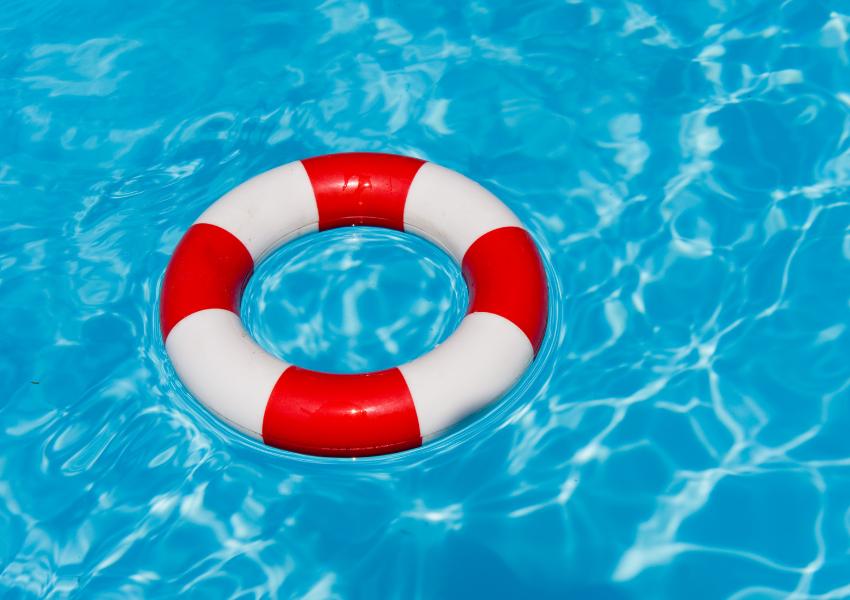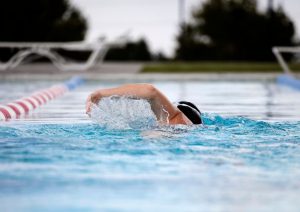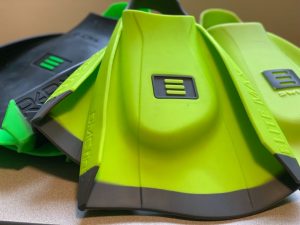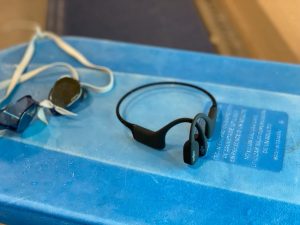
7 Best Swim Snorkels for Better Technique and Faster Swimming
Ready to throw down on a new swimmer’s snorkel? Here are reviews of the best swim snorkels for lap swimming.

Wondering how often you should be testing the water in your pool or spa? Here’s a detailed look at how frequently you should test your pool.
Your swimming pool and spa relies on being properly balanced to keep the water clean and safe for swimming.
As a pool owner, you already know the importance of regularly cleaning and maintaining the pool, from using the right amount of shock, stuffing chlorine tablets into that floating dispenser, and raking out dead leaves and bugs.
But how often should you test the water?
Every day? Every other day?
In this guide, we will look at both the routine testing of the pool water and occasions where you should perform a supplemental test of the pool water.
By the end, you will have a detailed action plan and schedule for keeping your water sparkling clean and ready for more cannon-balls and fun.
Let’s jump in!
While there are a ton of different things you can test your pool water for, from pool temperature to total dissolved solids, there are only a handful of things that you should test regularly.
If you are new to this process and all the lingo, don’t stress—once you get an overview of testing frequency and optimal ranges, it’s actually quite simple.
How often: 1-2x per week depending on usage plus after inclement weather and heavy usage.
Chlorine is the heavy lifter when it comes to keeping the water in your pool clean and bacteria-free.
It wards off algae growth, zaps bacteria (which can cause some gnarly infections) and keeps the water clear. In other words, super important!
So does that mean you should test the chlorine every day?
No—testing the pool water for chlorine can be done two or three times per week is more than sufficient for “regular” use and weather.
When testing the water, we want to see:
How often: Weekly
Water that has the correct pH reduces irritation in the eyes and skin. Often, swimmers who get bloodshot eyes and rashy skin blame chlorine, but it’s often that simply that the pH is off.
Low pH makes the water acidic and can damage pool equipment like pipes, the pool liner, and plaster. Low enough, it can dissolve pool equipment and components, such as the copper heat exchanger in your pool heater.
Too high, and you get scale forming, which causes calcium build-up and can stain the pool. High pH will also cause cloudy pool water, shorten the cleaning cycle on the pool filter, and cause eye and skin irritation.
When testing the water, look for:
How often: Weekly
Alkalinity is a buffer for the pH levels in your pool and represents your pool water’s ability to neutralize acid and regulate pH.
If too low, pH levels will zig-zag all over the place, causing corrosion of equipment and increasing eye and skin irritation. Too high, you start to get cloudy pool water, scale formation, and difficulty changing the pH.
Testing alkalinity is easy to check as most pool testers, whether we are talking about your standard pool test strip or a fancy-pants digital pool tester already test for this as well as chlorine and pH.
When testing, look for:
How often: weekly (but only for pools that get sunshine)
Cyanuric acid (or CYA, also known as “conditioner”) is the bodyguard to your chlorine in the pool, helping it last longer and stick around long enough to do its job.
UV rays and chlorine have an adversarial relationship. Without conditioner, all of the chlorine in your pool would quickly degrade and evaporate within a day.
Too much CYA actually requires more chlorine for it to be effective, and the only way to balance out too much conditioner in the water is to lower water levels and refill the pool in order to dilute the higher CYA levels. Not fun.
And it the CYA levels are too low, well, the sun is going to burn off the chlorine in the pool, leading to all the familiar issues of poorly chlorinated pools: cloudy pool water, algae growth, bacterial growth, and so on.
When testing the pool, look for:
Ultimately, you should make a point to check chlorine, pH, cyanuric acid, and alkalinity on a weekly basis.
Other things you should test—on a less frequent basis or as needed—include:
How often: 2-3x per year
Calcium should be tested several times per year as a low calcium hardness level means the pool water is going to start pulling calcium from the pool walls to balance itself.
Needless to say, this isn’t good, and can lead to significant deterioration of the walls.
High calcium levels are also not good, leading to calcium build-up on the walls which are very difficult to remove.
When testing, look for:
How often: as needed
Total dissolved solids (TDS) is a measurement that tells us how much stuff has entered the pool and become dissolved.
“Stuff” includes the chlorine tablets, conditioner, sweat, oils, dead leaves, bugs, pee, and so on. Basically, if it’s entered the pool and become part of the water, TDS measures it.
TDS gives a pool owner an overview of what’s going in the water and helps prevent oversaturation of dissolved solids in the water, which typically requires dilution and/or partial draining to fix.
This is more of a diagnostic test for chlorine that isn’t properly functioning, or you have a “salty” taste from the pool water despite it being properly balanced and your pool filter working properly.
High TDS levels (2,000 ppm and up) cause the onset of corrosion and increase scaling, and as mentioned earlier, fixing this requires a partial drain which can be a pain in the butt.
When testing the pool water, look for:
Outside of your regular pool maintenance and cleaning, including opening and winterizing your pool, there are going to be occasions where you are going to want to test the pool water.
They include:
You had a big party, tons of guests, and lots of traffic through the pool. Lots of fun! Not so fun, however, it that all that sweat, oil, and other, uhm, stuff gets into the water, burning through chlorine, leaving the water unbalanced.
It’s always a great idea to test the pool water after it has seen a lot of use.
Heavy-traffic pool sessions tend to result in cloudy pool water, too, so you’ll have a reliable visual cue that the water is due for some testin’.
While many pool covers can do a good job of keeping water out of your swim pool, if it’s solely covered with a solar pool cover or an ill-fitting cover, rainfall will get into the pool and quickly dilute the amount of chlorine in the water.
Unless your pool is fully covered and keeping rainwater out, test after those big and rainy days.
Speaking of inclement weather, wind and stormy weather can quite literally blow the pool chemicals off the top of your pool or spa, throwing off the pool chemistry.
Sometimes the pool can get so cloudy or unbalanced that it requires a healthy dose of pool shock to sanitize the water.
You should always test the pool water after shocking or treating the pool to make sure that chlorine levels are in a safe range for swimmers.
(See also: How Often Should You Shock Your Pool?)
So basically, if in doubt, test!
Test your pool water in the morning or at the end of the day.
Mornings are your best bet as it gives you an opportunity to address any pool chemistry issues before swimmers take to the water.
Testing in the evening is a great option for more aggressive treatments like pool shock, which can require up to 24 hours to do its thing.
There is no shortage of ways to test your pool water, and ultimately, the types of pool test kit you choose comes down to budget and usage.
The main three options are test strips, liquid test kits, and digital pool testers.
Test strips are the least expensive option and provide results relatively quickly but can be hampered by difficulty color-matching samples.
Liquid test kits are similarly fast to administer, but are a little pricier upfront and when it comes to purchasing more reagents for testing.
Digital pool testers are the most advanced (and costly) option, but give you the most accurate readings.
The summer’s over, you’ve winterized the pool, and wrapped it with a winter pool cover for the cold months.
Should you still test the pool water during the winter?
Depends on the weather.
Very cold winters will greatly mitigate bacterial growth, but during warmer stretches and thaws, it’s worth testing the pool water.
This is also a great chance to check the water levels and add any pool algaecides or other chemicals to protect your pool and ensure a smooth reopening in the spring.
Testing the water in your pool can feel scary for a lot of first-time pool and spa owners.
But don’t worry—once you get an understanding of what test does what, and how to address the underlying issues you are testing for, you can go back to enjoying the summer sun.
My best piece of advice is this: create a regular testing schedule and routine.
The routine is what will help you avoid the problems that come with avoiding or neglecting regular testing and cleaning of your pool.
At the end of the day, a little routine will go a long way in ensuring that your swim pool is clean, safe, and fun all summer long.
8 Best Automatic Pool Cleaners to Keep Your Pool Sparkling. Keep your pool clean and sparkling with our hand-picked selection of the best automatic pool cleaners.
How to Open Your Above-Ground Pool Like a Boss. Looking to open your above-ground pool for a season of sun and fun? Here is a simple 9-step process for opening your pool like a champ.
Subscribe to the YourSwimLog.com newsletter and get tips and advice on how to swim faster every weekday morning, straight to your inbox.
Join 33,000+ swimmers, coaches, and swim parents learning what it takes to swim like a boss.
Unsubscribe anytime. Email will never be shared or sold.

Olivier Poirier-Leroy Olivier Poirier-Leroy is the founder of YourSwimLog.com. He is an author, former national level swimmer, two-time Olympic Trials qualifier, and swim coach.

Ready to throw down on a new swimmer’s snorkel? Here are reviews of the best swim snorkels for lap swimming.

Looking to get some new swim gear on a budget? Shop the best Black Friday deals for swimmers in this exclusive guide.

Looking for the best swimming app to maximize your time and effort in the water? Here’s a look at the top swim apps for conquering your swim workouts.

Fed up with the effects and smell of chlorine in your hair after swimming? Here is how to remove chlorine from your hair once and for all.

The DMC Elite fins are high-performance training fins for competitive swimmers. Here’s a review of why these fins are flat-out awesome.

Part waterproof MP3 player, part bone conduction headphones, the Shokz OpenSwim are a swimmer’s dream for listening to music in the pool. Here’s a hands-on, in-the-water review of the Shokz OpenSwim.

LANE 6 PUBLISHING © 2012-2024 · PRIVACY POLICY · RETURN POLICY · TERMS OF SERVICE · AFFILIATE DISCLOSURE